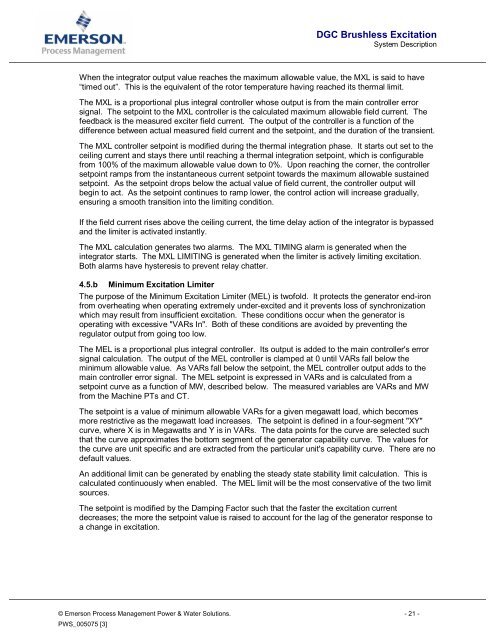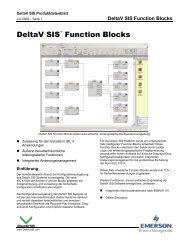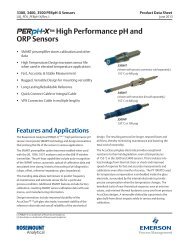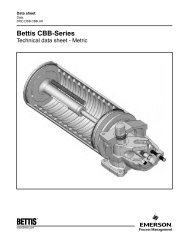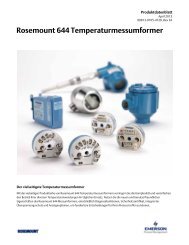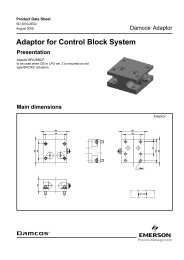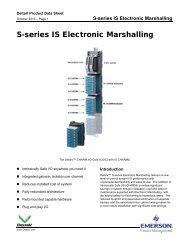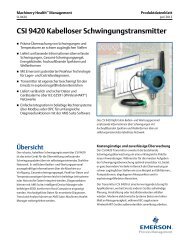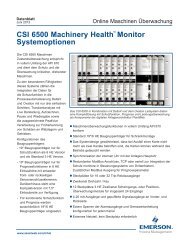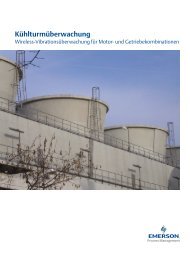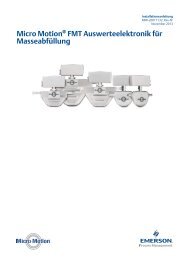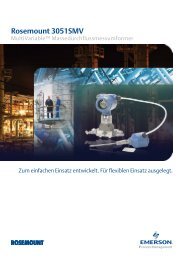DGC Brushless Excitation - Emerson Process Management
DGC Brushless Excitation - Emerson Process Management
DGC Brushless Excitation - Emerson Process Management
You also want an ePaper? Increase the reach of your titles
YUMPU automatically turns print PDFs into web optimized ePapers that Google loves.
<strong>DGC</strong> <strong>Brushless</strong> <strong>Excitation</strong><br />
System Description<br />
When the integrator output value reaches the maximum allowable value, the MXL is said to have<br />
“timed out”. This is the equivalent of the rotor temperature having reached its thermal limit.<br />
The MXL is a proportional plus integral controller whose output is from the main controller error<br />
signal. The setpoint to the MXL controller is the calculated maximum allowable field current. The<br />
feedback is the measured exciter field current. The output of the controller is a function of the<br />
difference between actual measured field current and the setpoint, and the duration of the transient.<br />
The MXL controller setpoint is modified during the thermal integration phase. It starts out set to the<br />
ceiling current and stays there until reaching a thermal integration setpoint, which is configurable<br />
from 100% of the maximum allowable value down to 0%. Upon reaching the corner, the controller<br />
setpoint ramps from the instantaneous current setpoint towards the maximum allowable sustained<br />
setpoint. As the setpoint drops below the actual value of field current, the controller output will<br />
begin to act. As the setpoint continues to ramp lower, the control action will increase gradually,<br />
ensuring a smooth transition into the limiting condition.<br />
If the field current rises above the ceiling current, the time delay action of the integrator is bypassed<br />
and the limiter is activated instantly.<br />
The MXL calculation generates two alarms. The MXL TIMING alarm is generated when the<br />
integrator starts. The MXL LIMITING is generated when the limiter is actively limiting excitation.<br />
Both alarms have hysteresis to prevent relay chatter.<br />
4.5.b Minimum <strong>Excitation</strong> Limiter<br />
The purpose of the Minimum <strong>Excitation</strong> Limiter (MEL) is twofold. It protects the generator end-iron<br />
from overheating when operating extremely under-excited and it prevents loss of synchronization<br />
which may result from insufficient excitation. These conditions occur when the generator is<br />
operating with excessive "VARs In". Both of these conditions are avoided by preventing the<br />
regulator output from going too low.<br />
The MEL is a proportional plus integral controller. Its output is added to the main controller's error<br />
signal calculation. The output of the MEL controller is clamped at 0 until VARs fall below the<br />
minimum allowable value. As VARs fall below the setpoint, the MEL controller output adds to the<br />
main controller error signal. The MEL setpoint is expressed in VARs and is calculated from a<br />
setpoint curve as a function of MW, described below. The measured variables are VARs and MW<br />
from the Machine PTs and CT.<br />
The setpoint is a value of minimum allowable VARs for a given megawatt load, which becomes<br />
more restrictive as the megawatt load increases. The setpoint is defined in a four-segment "XY"<br />
curve, where X is in Megawatts and Y is in VARs. The data points for the curve are selected such<br />
that the curve approximates the bottom segment of the generator capability curve. The values for<br />
the curve are unit specific and are extracted from the particular unit's capability curve. There are no<br />
default values.<br />
An additional limit can be generated by enabling the steady state stability limit calculation. This is<br />
calculated continuously when enabled. The MEL limit will be the most conservative of the two limit<br />
sources.<br />
The setpoint is modified by the Damping Factor such that the faster the excitation current<br />
decreases; the more the setpoint value is raised to account for the lag of the generator response to<br />
a change in excitation.<br />
© <strong>Emerson</strong> <strong>Process</strong> <strong>Management</strong> Power & Water Solutions. - 21 -<br />
PWS_005075 [3]


